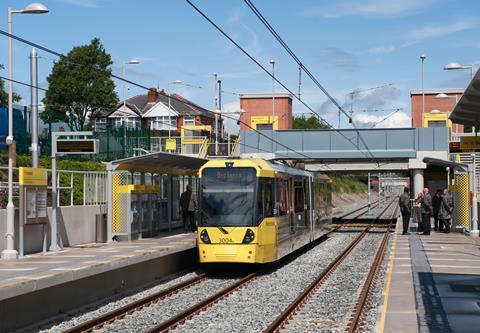
UK: The constant circulation of air by the ventilation system on Greater Manchester’s light rail vehicles helps to limit the risk of aerosol transmission of viruses, an independent study has found.
Transport for Greater Manchester commissioned Arup to undertake computational fluid dynamics modelling of its Bombardier Transportation M5000 trams, in what the authority said was first study of its kind in the UK.
The M5000 LRVs are ventilated through fans on the roof and air diffusers in the ceiling, with air exhausted from under-seat vent holes. The modelling assessed the air flow within the vehicle, with a particular focus on the potential for aerosol transmission of viruses, by looking at how exhaled breath spreads through the vehicle and how that is affected by factors like opening windows, mask wearing and activity levels.
The study found that even with the ventilation system operating at half capacity there were approximately 20 air changes per hour, which is better than a recommendation from the Scientific Advisory Group for Emergencies.
A recent SAGE Environmental Modelling Group paper recommended that ventilation rates in spaces where there is likely to be an enhanced aerosol generation rate should be at least 10 to 15 litres/s/person, in addition to the use of face coverings and social distancing measures. The modelling for Metrolink was 16 litres/s/person.
Arup’s modelling also showed that the risk of infection was reduced by around two-thirds when face coverings are worn.
The modelling has been shared with the Department for Transport and light rail industry body, UK Tram.
‘I hope these studies, coupled with robust cleaning and other additional measures we’ve introduced, help make people feel safe and confident as they return to our network’, said TfGM’s Head of Metrolink Danny Vaughan on April 13.

















